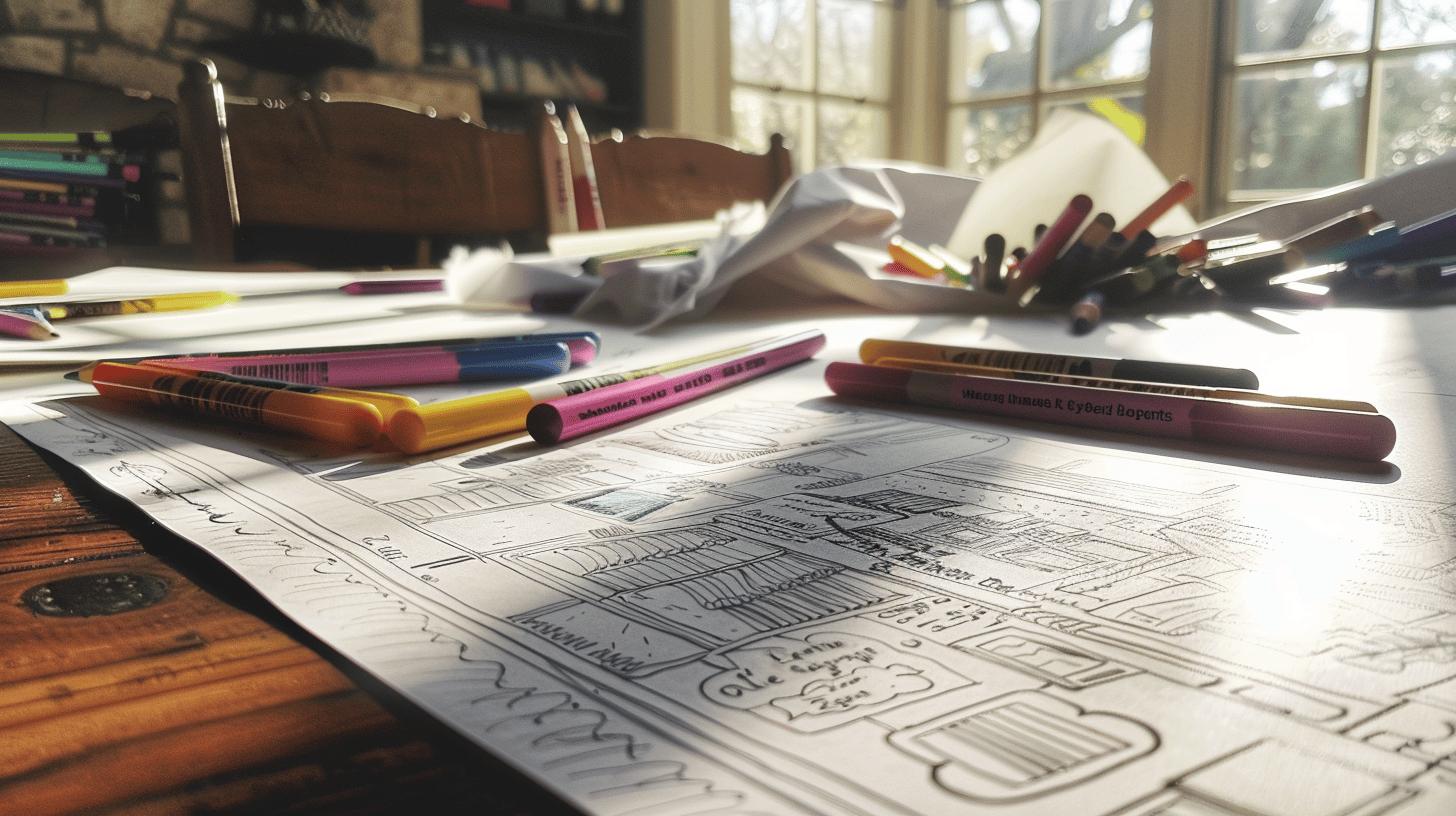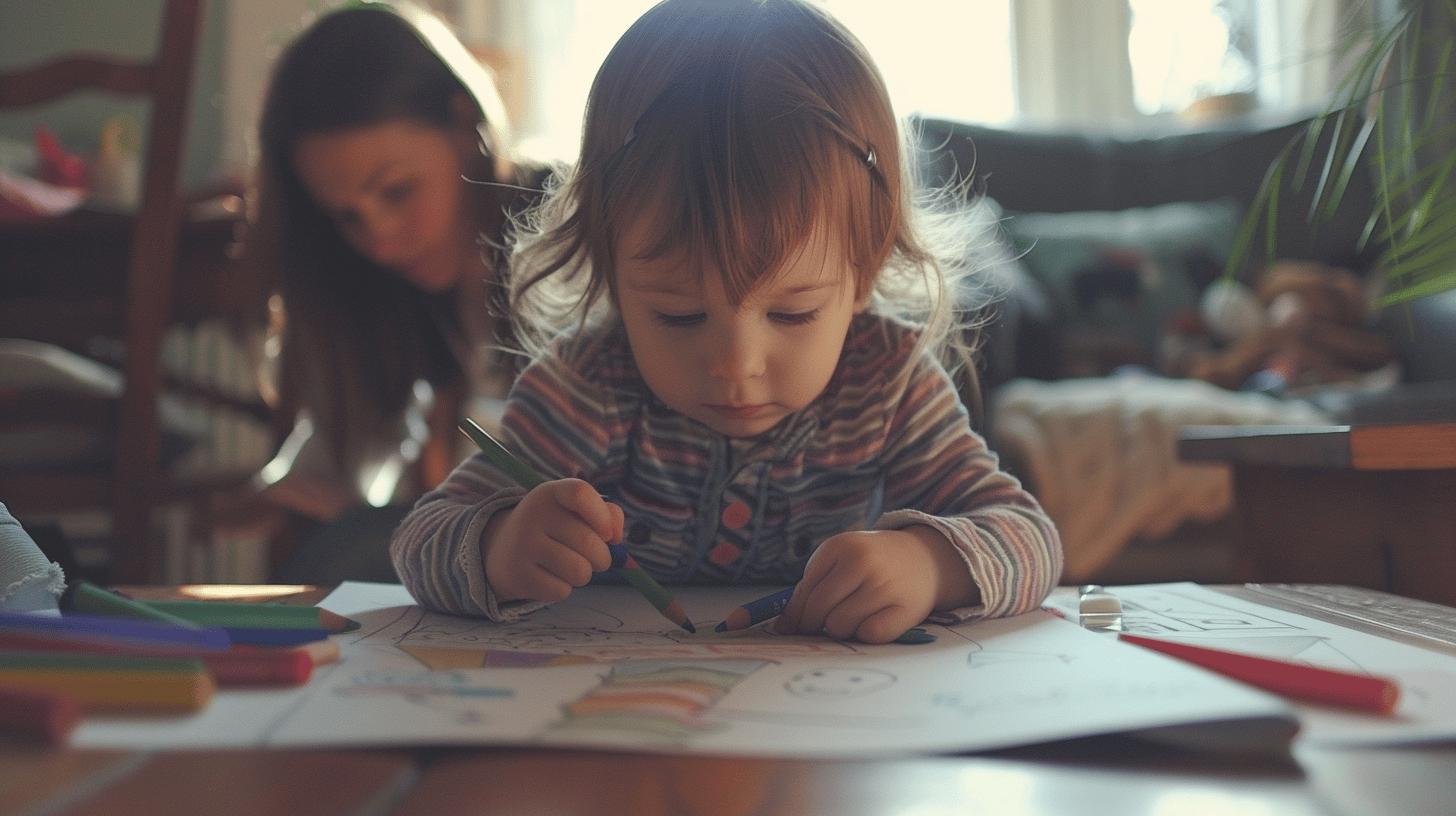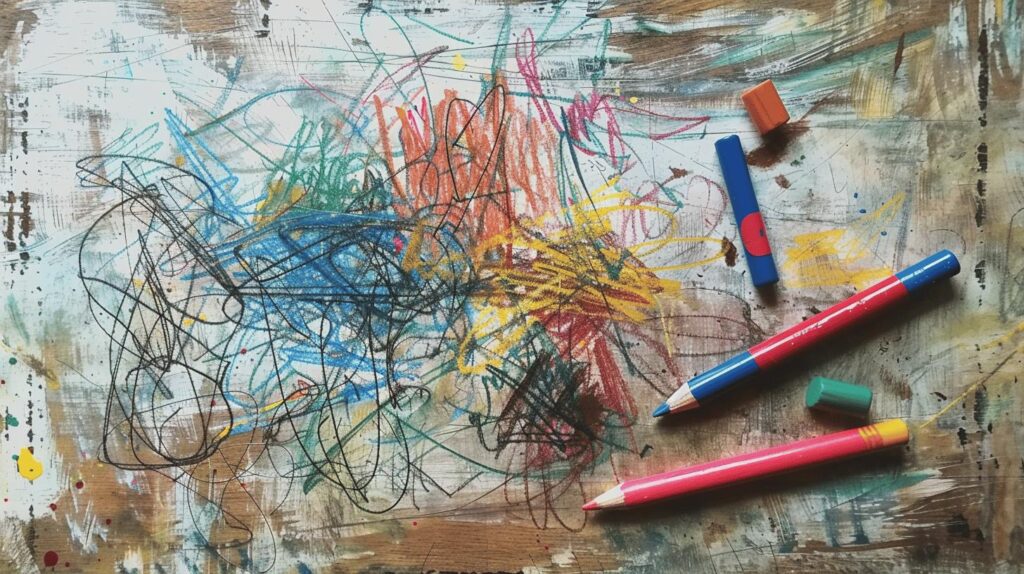Ever wondered why children’s drawings evolve from random scribbles to detailed masterpieces? Understanding the development stages of children's drawings can unlock insights into their cognitive and motor skills growth. By exploring these stages, you'll gain a deeper appreciation of every crayon mark and stick figure. This guide will walk you through each pivotal stage, from early scribbles to intricate sketches, highlighting the milestones that signify your child's artistic and developmental progression. Let’s demystify the fascinating journey of your child’s creative expression.
Scribbling Stage: The Foundation of Drawing Development
The Scribbling stage, occurring between ages two and four, marks the first developmental stage in children's drawing. This stage is crucial for early childhood development as it lays the groundwork for motor skills and cognitive abilities. During this period, children explore their creativity and start to understand the basics of visual expression.
The Scribbling stage is divided into three sections: random, controlled, and naming. Random scribbles are the initial marks children make, often characterized by chaotic and unstructured lines. These random scribbles signify the beginning of motor skills and cognitive development. As children gain more control, they move into the controlled scribbles phase, where their movements become more deliberate, showing improved motor control and hand-eye coordination. Finally, the naming stage involves children starting to associate their scribbles with specific objects or concepts, indicating an early understanding of symbolism.
The Scribbling stage is essential for developing fine motor skills and cognitive abilities. As children practice drawing, they enhance their manual dexterity and hand-eye coordination. Additionally, the naming phase helps children develop symbolic thinking, a critical cognitive skill that allows them to understand and represent the world around them.
- Key milestones achieved in the Scribbling stage:
- Development of motor skills
- Improved hand-eye coordination
- Beginning of symbolic thinking
Pre-Schematic Stage: Emergence of Shape and Form

The Pre-Schematic Stage occurs between ages 4-7 and is a pivotal period in the development of children's drawing skills. During this stage, children begin to create simple shapes and make their first attempts at representing objects and people. This marks a significant shift from the random scribbles of earlier stages, as children start to recognize and reproduce the basic forms around them.
Drawings in this stage often feature exaggerated characteristics and lack proportion. For example, a child might draw a person with a large head and small body. These exaggerated features are a natural part of the developmental process and reflect the child's growing understanding of visual representation. Children at this stage are experimenting with size and shape, trying to capture the essence of what they see in their own unique way.
The Pre-Schematic Stage is crucial for cognitive development and visual representation skills. As children create these simple shapes and begin to add details, they are developing their ability to observe and interpret the world around them. This stage also helps to improve fine motor skills as children practice controlling their drawing tools to create more deliberate shapes and forms.
| Age Range | Drawing Characteristics |
|---|---|
| 4-5 years | Simple shapes, basic representations of people and objects |
| 5-6 years | Attempt to add details, exaggerated features |
| 6-7 years | More refined shapes, early attempts at proportion |
Schematic Stage: Developing Organization and Detail
The Schematic Stage occurs between ages 7-9 and marks a significant phase in the stages of artistic development. During this stage, children's drawings become more detailed and organized. Their artistic skills evolve as they start to use a baseline and demonstrate a sense of proportion and spatial relationships. This stage is crucial as it reflects an increased understanding of the world and improved cognitive and motor skills.
Drawings in the Schematic Stage exhibit specific characteristics that highlight this developmental progress. One of the most notable features is the use of a baseline. Children often draw a line at the bottom of the paper to represent the ground, which helps them organize objects and figures in relation to each other. This use of a baseline shows their growing awareness of spatial relationships. Additionally, their drawings begin to show a sense of proportion, with figures and objects being more accurately sized and positioned relative to one another.
The Schematic Stage reflects children's growing understanding of their environment. As they develop a better grasp of spatial relationships, their drawings become more complex and detailed. This stage also indicates improved fine motor skills, allowing children to create more intricate and organized artwork. The ability to represent the world more accurately in their drawings signifies their cognitive development and readiness for more advanced artistic challenges.
- Key milestones achieved in the Schematic Stage:
- Use of a baseline in drawings
- Improved sense of proportion
- Increased detail and organization
Transitional Stage: Complexity and Realism

The Transitional Stage occurs between ages 9-12 and marks a significant period in the developmental stages of drawing a person. During this stage, children's drawings exhibit more complexity and realism compared to earlier stages. This transition is crucial as it reflects advanced cognitive and motor skills, as well as an increased understanding of visual realism.
Drawings in the Transitional Stage are characterized by the use of perspective and shading. Children begin to incorporate these techniques to add depth and dimension to their artwork. For example, they might use shading to show light and shadow on a drawing of a person, making it appear more three-dimensional. The ability to use perspective allows them to create a sense of space and distance, adding realism to their drawings.
This stage indicates significant cognitive and motor development. As children practice these more advanced drawing techniques, they enhance their fine motor skills and hand-eye coordination. The use of perspective and shading also demonstrates their growing ability to observe and interpret visual information accurately. This stage is a clear indicator of their advanced understanding of the world and their ability to represent it more realistically in their drawings.
| Age Range | Drawing Characteristics |
|---|---|
| 9-10 years | Use of perspective, basic shading |
| 11-12 years | Increased complexity, more realistic depictions |
Realistic Stage: Mastery of Detail and Technique
The Realistic Stage, occurring from age 12 and up, represents a significant advancement in children's drawing abilities. This stage is crucial as it highlights children’s capability to create drawings that are more lifelike and detailed than in previous stages. The development of these skills reflects a higher level of observational prowess and a deeper understanding of artistic techniques.
Drawings in the Realistic Stage exhibit characteristics such as lifelike detail and the use of advanced techniques. Children demonstrate mastery of proportion, ensuring that the sizes of objects and figures are accurate and balanced. They also employ perspective, creating a sense of depth and three-dimensionality in their artwork. Shading techniques are used to add light and shadow, further enhancing the realism of their drawings. These skills allow children to produce artwork that is not only detailed but also visually convincing.
This stage is indicative of children’s mastery of artistic skills and their observational abilities. As they practice and refine their techniques, they gain a more profound understanding of how to represent the world around them accurately. The ability to replicate intricate details and utilize advanced methods such as perspective and shading shows their growth in both cognitive and motor skills. This development is fundamental for those who wish to pursue art more seriously, as it lays the groundwork for more sophisticated artistic endeavors.
- Key milestones achieved in the Realistic Stage:
- Mastery of proportion
- Advanced use of perspective
- Detailed and lifelike drawings
Supporting Children's Drawing Development at Each Stage

Understanding and supporting each stage of drawing development is crucial for nurturing a child's artistic growth. Each stage represents different cognitive and motor skills that children develop over time. Recognizing these stages allows parents and educators to provide the appropriate encouragement and resources to enhance children's drawing abilities. By understanding these developmental milestones, adults can more effectively support children's artistic journeys.
Parents and educators play a key role in encouraging artistic expression. They can foster a child's creativity by providing opportunities for drawing and expressing themselves through art. Encouraging children to draw regularly and praising their efforts builds confidence and motivation. Parents and educators can also model positive attitudes toward art, showing that drawing is a valuable and enjoyable activity. This support helps children feel more comfortable exploring their artistic skills.
Providing appropriate materials and a supportive environment helps children develop their skills. Tailored activities and diverse drawing tools can enhance a child's progress at each developmental stage. For example, young children in the Scribbling stage benefit from large crayons and ample space to make broad strokes. As children advance to more complex stages, offering smaller drawing tools and more structured activities can help them refine their skills. Creating an environment that is non-judgmental and encourages experimentation allows children to develop their drawing abilities without fear of criticism.
- Tips for supporting drawing development:
- Provide a variety of drawing materials
- Encourage creativity and expression
- Create a supportive and non-judgmental environment
- Tailor activities to the child's developmental stage
Final Words
In the action of exploring the development stages of children's drawings, each age range reveals unique milestones.
Starting with the Scribbling Stage, children develop motor skills and early cognitive abilities through random and controlled actions. The Pre-Schematic Stage introduces basic shapes and visual representation.
Moving to the Schematic Stage, we see detailed and organized drawings with a sense of proportion. The Transitional Stage adds complexity and realism, showing advanced motor skills and perspective.
Finally, the Realistic Stage showcases a mastery of detail and technique.
Understanding these stages helps parents and educators support children's artistic growth effectively, fostering both creativity and cognitive development.
FAQ
What are the developmental milestones for drawing body parts?
A: Children typically start drawing recognizable body parts around age 4-5, including simple shapes for heads, arms, and legs.
What are the stages of drawing development?
A: The main stages of drawing development are Scribbling (2-4 years), Pre-Schematic (4-7 years), Schematic (7-9 years), Transitional (9-12 years), and Realistic (12+ years).
What are the 5 stages of drawing development?
A: The 5 stages are:
- Scribbling
- Pre-Schematic
- Schematic
- Transitional
- Realistic
What should a 2-year-old be able to draw?
A: At 2 years old, children typically engage in random scribbling, which helps develop motor skills and cognitive abilities.
At what developmental stage do children draw stick figures?
A: Children generally start drawing stick figures during the Pre-Schematic Stage, around ages 4-7.
In which order does a preschool-aged child's drawing progress?
A: Preschool-aged children progress from Scribbling to the Pre-Schematic Stage, where they start creating simple shapes and early representations of objects.
What are the early childhood drawing stages from 0-8 years?
A: Early childhood drawing stages include:
- Scribbling (2-4 years)
- Pre-Schematic (4-7 years)
- Early parts of the Schematic Stage (7-8 years)
How does the Scribbling stage help in development?
A: The Scribbling stage helps develop motor skills, hand-eye coordination, and the early understanding of symbolism.


